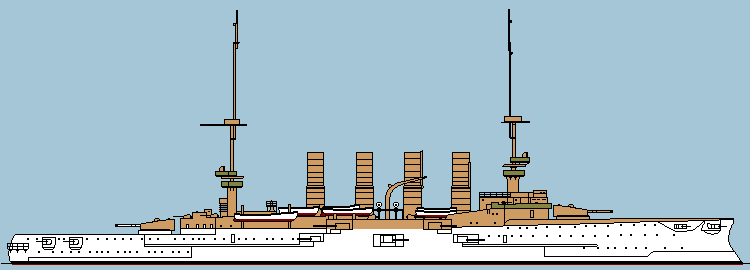Scharnhorst
and Gneisenau
were the last German armored cruisers of the old classical design, their successor, the Blücher
, would mark the way to the modern battlecruiser. Being the final evolution of a series of ships, the two armored cruisers were the heaviest armed and best protected of their kind in the German fleet.
Their main armament was doubled to eight 21 cm guns, four in turrets and four in single mounting at the sides of the ship - the secondary armament had decreased because of this. The increase of armor and the enlargement of the engine system cause a massive increase of size compared to their predecessors, almost 20%. Their general layout and design was very similar to those of the Roon
class giving the ships a very similar appearance.
After the construction of the British battlecruiser Invincible
, the armored cruiser was outdated and not fit for fleet operations in the North Sea anymore. Therefore, both ships were send to the East Asian cruiser squadron where they had a similar fate, taking part in two of the famous naval battles of World War I. both fought the Battle of Coronell, sinking two British armored cruisers and were sunk during the Battle of the Falkland islands five weeks later by superior British battlecruisers.
|


